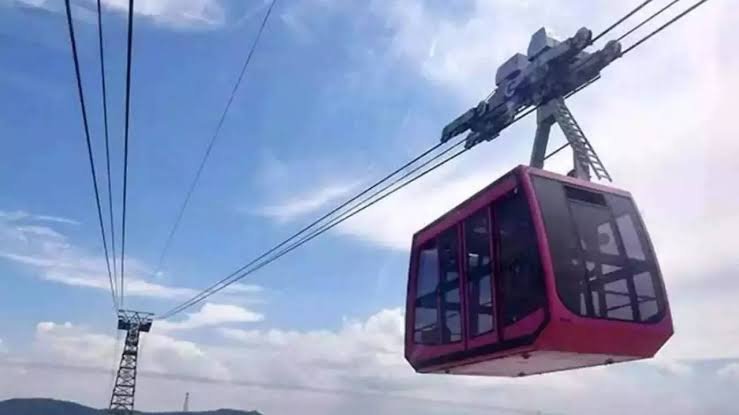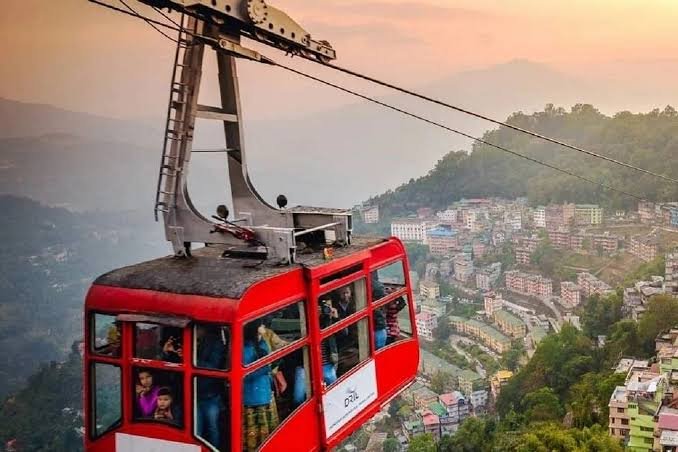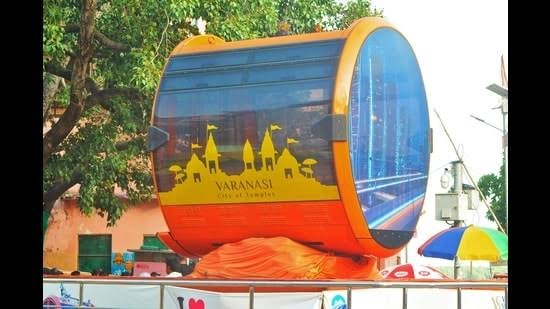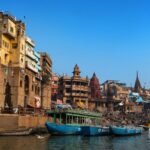India’s oldest and holiest city, Varanasi, is about to become the first to implement an urban ropeway transportation system. This ambitious project, built by Switzerland’s renowned company Bartholet, intends to improve public transit in light of the city’s growing population and increasing congestion. The ropeway promises top-notch technology, improved security, and easy access to important downtown landmarks.

Varanasi’s Need for an Urban Ropeway
Kashi, another name for Varanasi, is one of the most crowded cities in India. Intra-city transport has become difficult due to the congested roads, heavy tourist and pilgrim traffic, and the limited lanes. With a budget of INR 807 crores, Prime Minister Narendra Modi addressed this issue by laying the groundwork for the urban ropeway project on March 24, 2023. It is anticipated that the project will greatly cut down on travel time and alleviate traffic in strategic locations.
Swiss Knowledge: Bartholet’s Contribution to the Ropeway Initiative
This innovative project in India is being led by Bartholet, a Swiss company that specializes in ropeway construction. Swiss ropeway infrastructure has long been renowned, and Bartholet is now transferring that knowledge to Kashi. The ropeway satisfies international requirements thanks to the company’s emphasis on cutting-edge safety features.
The Mono Cable Detachable Gondola System is among the most noteworthy features. This technology makes sure that the cable car may be securely transferred to the closest station using an emergency mechanism in the case of a technical malfunction or power outage. Important stations like Cantonment (Cantt) and Rath Yatra have also been equipped with diesel-powered motors, which will start on their own in the event of an emergency.
Technological Developments and Construction Progress
The construction project is moving quickly forward. Hiren, an X user, recently posted a video on social media that demonstrated the project’s impressive progress. The video demonstrated the accuracy and cutting-edge technology being used. Currently, important activities consist of:
The rope pulling procedure is finished.
The station construction is completed, and the stations’ supporting equipment is installed.
Testing and putting safety protocols into practice

3.8 kilometers will be covered by the ropeway, which will have four major stations:
Kashi Vidyapeeth 2. Varanasi Cantt (Railway Station) 3. Rath Yatra 4. Godowlia (near Kashi Vishwanath Dham)
To serve commuters, pilgrims, and city visitors, each station is positioned with purpose.
The Ropeway System’s Improved Safety Measures
Because passenger safety is so important, Bartholet has included the following cutting-edge safety features:
The ropeway will remain operational in the event of a power outage thanks to the diesel-powered motors at strategic stations.
Automated Control Mechanisms: To identify and fix issues quickly, the system will incorporate automatic controls and real-time monitoring.
The design is resistant to weather. The ropeway’s design ensures continuous operation throughout the year by withstanding severe weather conditions.
Efficiency and Speed: Passengers will be able to finish the 3.8 kilometer trip in just 15 minutes because to the system’s 21 km/h speed, which is much faster than driving.
A total of 4500 passengers per hour in one direction can be accommodated by the 10 passengers that each cabin can hold.
Difficulties in Implementing the Project
Notwithstanding the quick development, there have been some difficulties with the project, especially in deciding on the placement of the Godowlia station next to Kashi Vishwanath Dham. The district government had trouble purchasing land because of space limitations. Authorities have, however, made a concerted effort to guarantee that the project stays on course without changing the initial alignment.
Impact on the Economy and Environment
It is anticipated that the urban ropeway will significantly affect the economy and the environment:
Decreased Traffic Congestion: By offering a practical substitute for road transportation, the ropeway will cut down on travel time and traffic congestion.
- Boost to Tourism: Varanasi is one of the most popular pilgrimage sites in India, drawing millions of visitors each year. Their journey will be improved by the ropeway’s smooth connectivity.
Eco-Friendly Transport: By reducing reliance on fuel-based transportation, the project will help lower the city’s carbon impact.
Job Creation: Local engineers and workers will have job opportunities as a result of the ropeway’s construction and upkeep.
Future Growth and Opportunities
Similar urban ropeway systems might be implemented in other crowded Indian cities including Mumbai, Delhi, and Bengaluru if this pilot project proves successful. If successful, Varanasi’s concept might establish a standard for India’s future urban transportation options.
Final Thought:
An Important Turning Point for India The Kashi Urban Ropeway is more than just a transportation project; it represents India’s dedication to updating its infrastructure while maintaining the legacy of its historic cities. This project, which combines Indian ambition with Swiss accuracy, is poised to revolutionize urban mobility and establish Varanasi as a leader in sustainable and futuristic transport solutions in addition to being a spiritual center.

As the ropeway is almost finished, Varanasi residents and tourists alike may anticipate a world-class, safe, and efficient commuting experience that combines modern technology with tradition.







